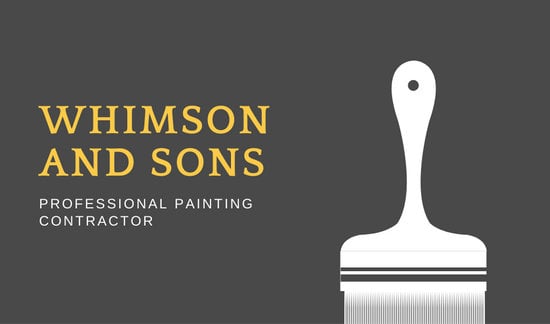Learn More About The Methods Which Seasonal Variables Can Influence The Success Of Commercial External Painting And Identify The Best Times To Attain Enduring Results For Your Job
Learn More About The Methods Which Seasonal Variables Can Influence The Success Of Commercial External Painting And Identify The Best Times To Attain Enduring Results For Your Job
Blog Article
Authored By-Burnham Rodriquez
When you're preparing a business exterior paint job, seasonal aspects can make or damage your results. You'll want to think about just how temperature and moisture effect paint application and drying out times. Selecting the appropriate period can ensure your paint sticks properly and lasts much longer. But which seasons are truly the best for this type of job? Let's explore the crucial elements that can affect your project's success.
The Effect of Temperature on Paint Application
When you're planning a business exterior painting project, the temperature level can substantially affect just how well the paint adheres and dries out.
Ideally, you wish to paint when temperatures range between 50 ° F and 85 ° F. If it's also cool, the paint may not treat properly, causing concerns like peeling off or cracking.
On the other hand, if it's also warm, the paint can dry out also swiftly, avoiding proper bond and causing an irregular surface.
You ought to likewise take into consideration the time of day; morning or late afternoon provides cooler temperature levels, which can be a lot more desirable.
Always inspect https://interior-painter-near-me44432.blogsvirals.com/34134569/how-do-well-chosen-shades-affect-your-brand-s-appearance-in-commercial-external-paint-delve-into-the-vital-elements-that-direct-your-decision-making-procedure for the details paint you're utilizing, as they often offer guidance on the optimal temperature array for ideal outcomes.
Moisture and Its Impact on Drying Times
Temperature isn't the only ecological aspect that influences your industrial outside paint job; moisture plays a significant role also. High humidity degrees can slow down drying times dramatically, influencing the overall high quality of your paint work.
When the air is filled with wetness, the paint takes longer to heal, which can lead to problems like poor attachment and a greater threat of mold growth. If you're repainting on a particularly humid day, be planned for extensive wait times between coats.
It's crucial to keep an eye on regional climate condition and plan appropriately. Ideally, aim for humidity levels in between 40% and 70% for optimum drying out.
Keeping these factors in mind guarantees your job remains on track and provides a lasting finish.
Best Seasons for Commercial Exterior Paint Projects
What's the most effective season for your industrial outside painting jobs?
Spring and early fall are generally your best bets. During these seasons, temperature levels are mild, and humidity degrees are typically lower, creating ideal conditions for paint application and drying out.
Avoid summer's intense heat, which can trigger paint to completely dry as well promptly, resulting in poor bond and coating. Likewise, check here can prevent proper drying out and treating, risking the long life of your paint work.
Go for days with temperatures in between 50 ° F and 85 ° F for ideal results. Bear in mind to inspect the local weather report for rainfall, as wet conditions can ruin your task.
Planning around these variables ensures your painting job runs efficiently and lasts longer.
Final thought
In conclusion, preparing your industrial exterior painting projects around seasonal factors to consider can make a substantial distinction in the end result. By organizing work during the ideal temperature levels and moisture levels, you'll guarantee better bond and drying times. Remember to watch on regional weather report and select the right time of year-- spring and early loss are your best choices. Taking these actions will certainly aid you accomplish a long lasting and expert surface that lasts.
